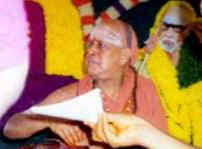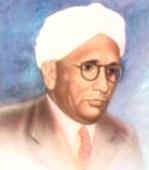When he finished his schooling at the age of 11, he had already read the lectures of Tyndall, Faraday and others. In 1903, he joined the Presidency College in Madras and completed his B.A. and M.A. and came out with flying colors. His papers were published in the prestigious Philosophical Magazine.
In 1907, he joined the Indian Financial Services and was posted at Calcutta. He was wedlocked to "Loksundari". In 1917, Sir Asutosh Mukherji, the Vice Chancellor of the Calcutta University invited Raman to take up the Palit Professorship in Physics. When he was at Calcutta, he made significant contributions to the field of vibration and sound, musical intruments, ultrasonics, diffraction, meterological and colloid optics, photoelectricity, x-ray diffraction, magnetism and dielectrics. In 1921 he delivered a lecture at the Oxford Conference on the Theory of Stringed Instruments. In 1924 he was elected as a Fellow of the Royal Society and was knighted by the British Government. In 1930, he was awarded the Nobel Prize for his research on the "Raman Effect".
He was appointed as the Director of the Indian Institute of Science ( IISc). But he was forced to resign the post and took over as the Head of the Department of Physics. In 1948, he founded an institution of his own, the Raman Research Institute (RRI) for research activities in select areas of Physics. Raman breathed his last on Nov. 21, 1970, at the age of 82 after an illustrious career in Physics.
Raman Effect:
The sample under study is illuminated using a monochromatic beam of light. The light scattered by the sample is analyzed using a Raman Spectrometer. A small amount of the light experiences a frequency shift, which is characteristic of the chemical bonds or molecules present in the material. This inelastic scattering of light is called the Raman effect. The analysis of the scattered frequencies (Raman spectroscopy) gives information on the material's chemical composition and even factors like stress, orientation, or temperature.


